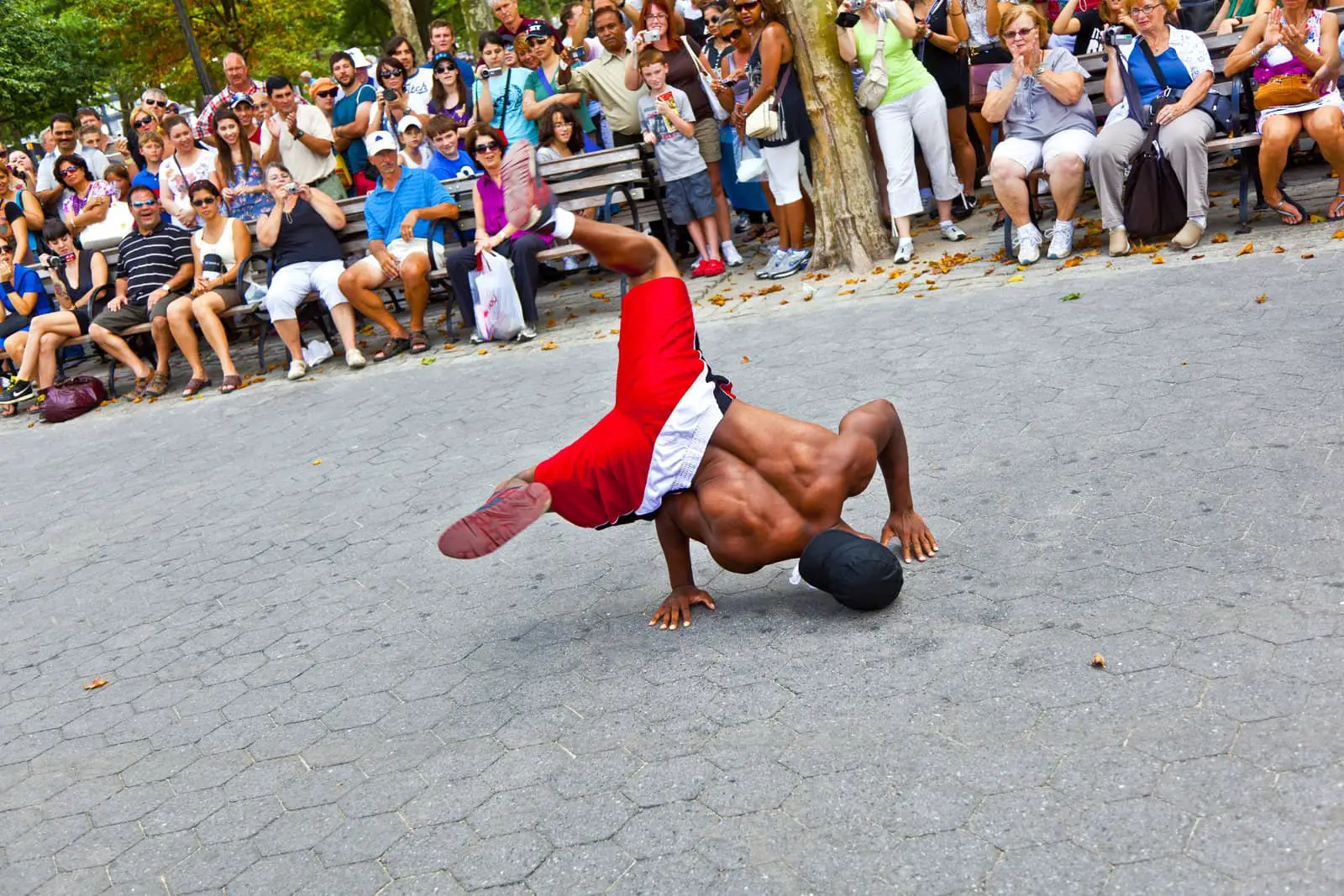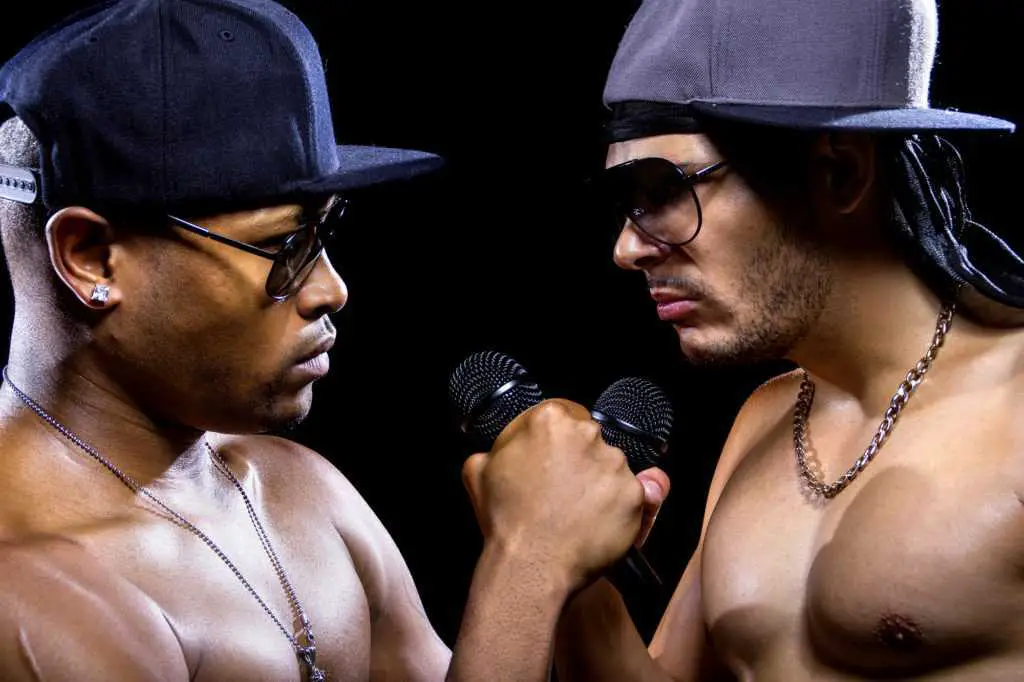Since the birth of hip hop and rap, there has been a huge debate on what the difference is and whether or not they are the same thing.
Even after these genres have been around for half a century, there is still often debate about the differences between the two.
Rap and hip hop are not the same thing. Hip hop is oftentimes looked at as the cultural movement as well as a style of music.
Hip hop as a culture has four different pillars- DJing, breakdancing, graffiti, and finally rapping. Rap is a style of music that branches off of hip hop as a culture.
Although these are the basic and fundamental differences between rap and hip hop, there are several different ways to view the two genres. If you’re interested in learning more about these differences, then this is the article for you.

Table of Contents
What Is Hip Hop?
Hip hop, as mentioned previously, is a culture, an art form, a music genre, and a way of life all rolled into one umbrella term.
There are so many different angles to approach this topic from that it is hard to narrow down which ones are the most important. Regardless, here you can find a ton of information about hip hop in its many distinct forms.
Hip Hop as a Culture
Hip hop emerged in the 1970s and quickly began to take the world by storm. Originating in poorer areas of the Bronx, hip hop had major influences from people of African, Latin, or Caribbean descent, as these were the demographics of these areas.
Hip hop in the 70s served as a way for these minority groups to express their pain and frustration due to the unjust treatment they received.
They typically used this art form to protest the inequalities in the justice system, like prisons and police.
This frustration was not expressed solely through music, as many would think. These forms of artists protest manifested in 4 main ways: MCing/rapping, breakdancing, graffiti, and DJing.
These expressions have become known as the four pillars of hip hop, which has helped the genre become as successful as it is today.
MCing/Rapping
Through MCing and rapping, minority groups finally had a platform to talk about the racial and economic injustice they faced daily.
Rapping, which will be covered in more depth later, was largely derived from African American culture and their practice of “capping” and chanting. Capping is very similar to what we view as modern-day rap battles.
They can be freestyle or written and are often performed over backbeats or instrumental tracks.
Rap does an excellent job of demonstrating the injustices that are present in society, but it is often misinterpreted as something scandalous or bad.
Rap is simply an artistic way to express what one is feeling, like any other genre of music. It just takes the right ears to listen and comprehend what they have to say.
Breakdancing
Breakdancing is another huge and important part of hip hop as a culture. Break dancing has many names. Some call it b-boying, b-girling, or breaking.
Though it goes by many different names, it all “breaks down” into the same gymnastic-like elements.

There are four main kinds of break dancing that were performed during the beginning of this hip hop era. They are as follows.
- Power: Power moves are moves that utilize the entire body. Power move breakdancers often looked like they were defying gravity and physics with the way their body moved. This is the most common style of breakdancing.
- Abstract: This style of break dancing often involves fancy footwork and even some acrobatic type tricks, like contortions.
- Flavor: Flavor styles try to use their dance as a way to highlight the musicality of what they are dancing too. They rely less on power moves and the wow factor than other styles.
- Blow-Up: This style of breakdancing is all about the “wow factor.” Blow-up combines aspects of the other styles of breakdancing but changes the emphasis to make breakdancing as exciting as possible.
Graffiti
Hip hop today is not necessarily all-encompassing of the practice of graffiti. However, when hip hop was growing in popularity, many graffiti artists were inspired by this new angsty sound.
The group participating in the graffiti was equally as fed up and frustrated with political injustice as the rappers were.

These artists were inspired by the new music they were hearing and began to take stands with their art to protest the injustice and inequalities they were faced with. As hip hop grew, graffiti artists gained momentum as well.
Sometimes, graffiti even served as a publication or advertisement for hip hop artists and their music. This caused hip hop to gain even more momentum.
DJing
DJing originates from the jazz genre of music. The term “disc jockey” was the jazz equivalent that hip hop then adopted as a DJ.
Over the decades of hip hop, there have been many famous DJs that have completely changed the scene and pushed their art to defy previous limits.
Some of the most iconic DJs across the hip hop scene are DJ Kool Herc, Grandmaster Flash, and Grand Wizard Theodore.
What Is Rap?
As mentioned before, rap is one of the main pillars of hip hop. Rap music was a style of music born out of hip hop.
The angst that the people in hip hop culture were experiencing was the same angst that motivated and inspired rappers to make great tracks.
Over several decades of hip hop and rap, rap has become exceedingly more popular than the other three pillars of hip hop. Many rappers incorporate some of these other pillars but mostly focus on the poetry of their rap.
Some die-hard hip hop fans claim that this version of rap is not a legitimate expression of hip hop. A lot of people say that modern rap is simply commercialized, marginalized hip hop.
They believe that a lot of rappers are sell-outs because they don’t possess the angst that true hip hop artists have and disregard the other pillars as less important.
Regardless of what a few people may say, rap has still managed to become one of the most popular music genres today. Rap music uses a similar chant-like style, just as it did in the hip hop era.
Some people have made statements that they believe that rap often has a much more pessimistic view of the topics they are rapping about, whereas some just believe rap music approaches different topics entirely.
Another distinctive quality of rap is that it is often performed at slower tempos than hip hop songs. This isn’t true across the board, by any means, but it is a pattern that’s made itself prevalent.
Because hip hop also encompassed other pillars, it tended to have a more uptempo, danceable beat, whereas rap didn’t have to showcase any other aspects other than the music itself.
Indisputably, rap is 100% a derivative of the hip hop genre. It showcases the same artistic stylings as any hip hop MC would, but there is much debate about how similar and different rap music is to its mother genre.
Conclusion
Over the decades, there has been a considerable amount of debate surrounding the differences between hip hop and rap. Even after all of these decades, there is still much debate.
What we do know is that hip hop is a culture and a way of life as much as it was a genre. It had the four main pillars, MCing, DJing, breakdancing, and graffiti, and was a way for people to express their frustrations across many platforms.
Rap, however, was less of a culture and more of a genre, as it directly overlapped with the role of the MC in hip hop culture.
Maybe, in the next 50 years, there will still be a debate about the distinctions between hip hop and rap, but for today, it is undeniable that these genres will be chart-toppers for quite some time to come.



![HERE’S What Happened to the Soul Singer Al Green [2023 Update]](https://performerlife.com/wp-content/uploads/2023/04/what-happened-to-al-green-211x150.jpg)
